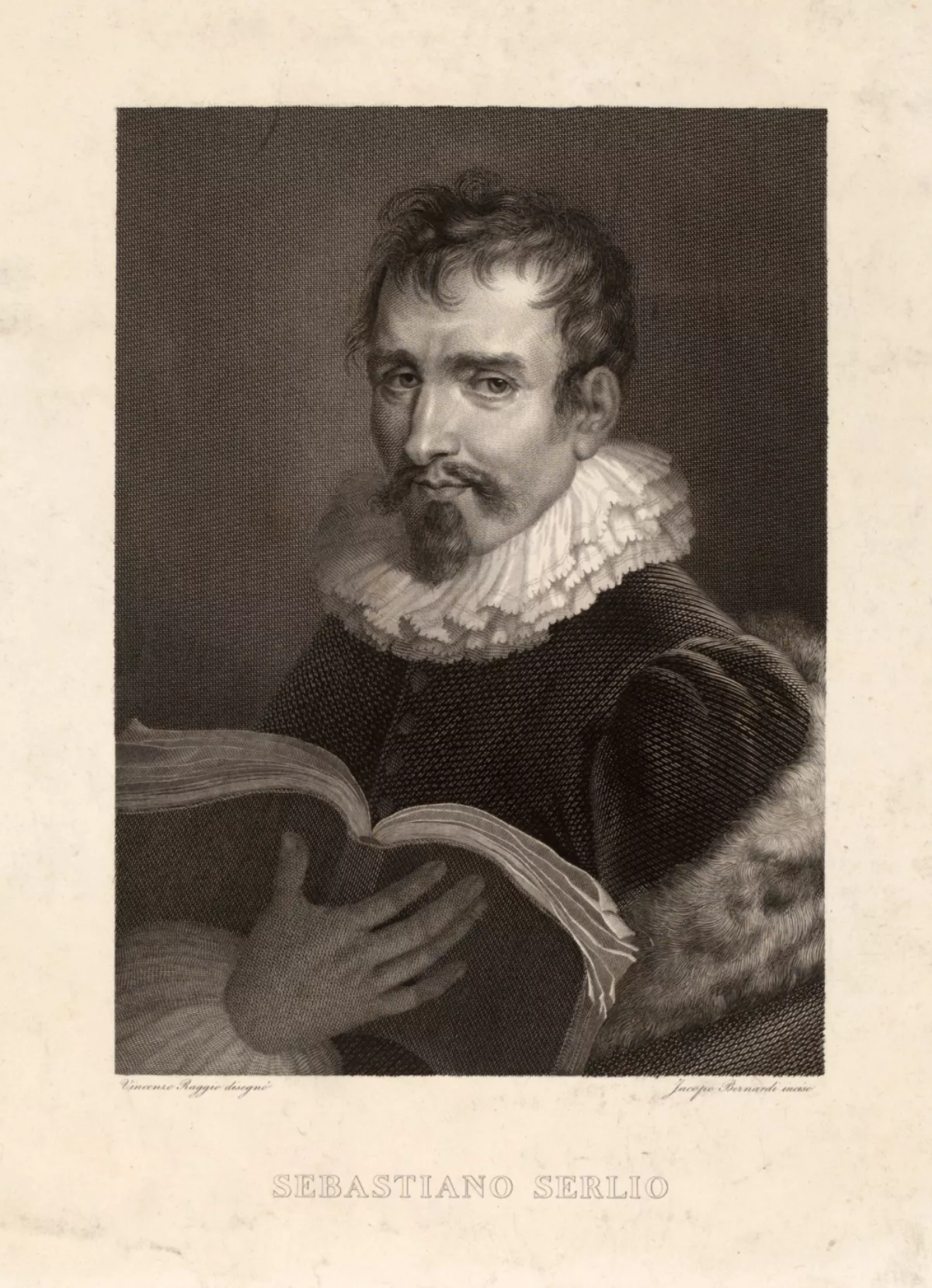 1.
1. Sebastiano Serlio was an Italian Mannerist architect, who was part of the Italian team building the Palace of Fontainebleau.

 1.
1. Sebastiano Serlio was an Italian Mannerist architect, who was part of the Italian team building the Palace of Fontainebleau.
Sebastiano Serlio lived in Venice from about 1527 to the early 1540s but left little mark on the city.
The idea was in the air in the 1530s: several contemporary churches compete for primacy, but Sebastiano Serlio's woodcut put the concept in every architect's hands.
Sebastiano Serlio took several private commissions, but the only one that has survived in any recognizable way is the Chateau of Ancy-le-Franc, built about 1546 near Tonnerre in Burgundy.
Sebastiano Serlio died around 1554 in the Fontainebleau section of Paris, after spending his last years in Lyon.
Sebastiano Serlio pioneered the use of high quality illustrations to supplement the text.
Sebastiano Serlio wrote in Italian, some of his books being published with parallel texts in Italian and French.
Sebastiano Serlio's treatise catered explicitly to the needs of architects, builders, and craftsmen.
Sebastiano Serlio composed two additional books, which can be thought of as appendices: the Extraordinary Book of Doors, the last book he saw through the press; and On Polybius' Castrametation, a discussion of ancient Roman military camp design, whose state of completion and intended relation to the other books are both uncertain.
Sebastiano Serlio's volumes were highly influential in France, the Netherlands and England as a conveyor of the Italian Renaissance style, and quickly became available in a variety of languages.
Later Sebastiano Serlio's book was in the libraries of Sir Christopher Wren and John Wood, the Elder the architect and entrepreneur who laid out Bath.